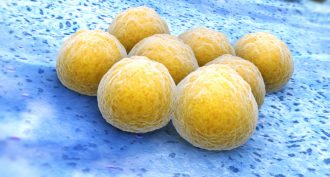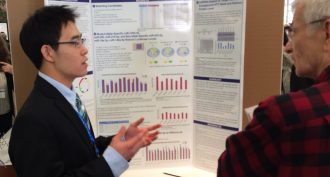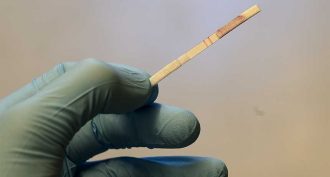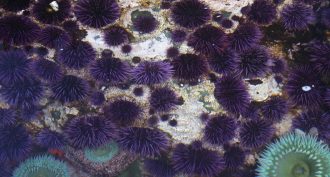MS-LS3-1
Develop and use a model to describe why structural changes to genes (mutations) located on chromosomes may affect proteins and may result in harmful, beneficial, or neutral effects to the structure and function of the organism.
-
 Microbes
MicrobesGerms help each other fend off antibiotics
Drug-resistant bacteria can cause persistent infections. A new study finds these germs fight drugs in different ways. And they can swap various compounds, increasing their neighbors’ chances of overcoming the drugs meant to kill them.
-
 Health & Medicine
Health & MedicineTeen uncovers new weapons to stop Huntington’s disease
David Seong, an Intel Science Talent Search finalist, is studying how tiny pieces of genetic material might be used to lock up a dangerous protein in Huntington’s disease.
-
 Health & Medicine
Health & MedicineSimple test for cancer and heart disease
Disease diagnosis often requires expensive equipment and tests to probe deep inside the body. But a new test relies on a fast, cheap and easy technique. And its answers appear on a strip of paper — just as they do on a pregnancy test.
-
 Brain
BrainWhy boys face higher autism risk
Boys develop autism at four times the rate seen in girls. Girls’ genes are better protected from the mutations linked to this brain disorder, data now suggest.
-
 Life
LifeCaught in the act
Scientists observe some evolutionary speed demons as they adapt over the course of just a few years to new environmental conditions.
-
 Animals
AnimalsChurk: Not for Thanksgiving
Here’s what happens when livestock breeders cross a chicken and a turkey
By Janet Raloff -

-
 Health & Medicine
Health & MedicineNew source for healthy fats
Scientists found a way to produce fish oil without harming a single fish.
-
 Animals
AnimalsAwake at Night
Mutant fruit flies can get by with less sleep than these insects normally need.
By Emily Sohn -
 Genetics
GeneticsA butterfly’s new green glow
Scientists have tweaked a butterfly's genes to make its eyes glow green.
By Emily Sohn -
 Genetics
GeneticsA DNA Clue to Reading Troubles
Scientists have identified a gene involved in a learning disorder called dyslexia.
By Emily Sohn